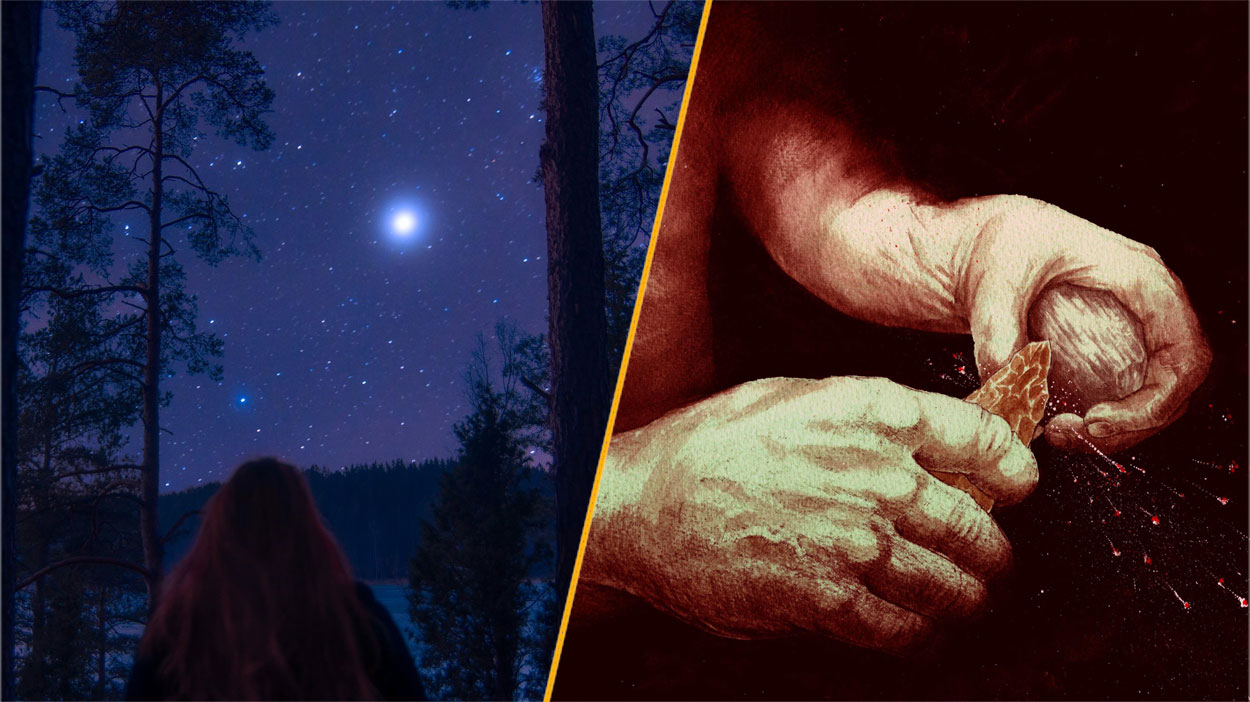Watch a black hole rip 4 stars to shreds in epic new NASA simulation
To avoid becoming stellar spaghetti, stars must have one thing in common.

In a high-stakes game of cosmic putt-putt golf, NASA researchers knocked eight simulated stars into the path of a monstrous black hole. Four stars survived the encounter intact — a little bent out of shape, maybe, but still held together by the strength of their own gravity.
And as for the other four stars? Well, let's say spaghetti will be the only dish on the menu there for the foreseeable future.
This new simulation, led by researchers at the Max Planck Institute for Astrophysics in Germany, aimed to answer a big question: What does it take for a star to survive a close encounter with one of nature's most destructive objects?
To find the answer, the team used realistic stellar density models to create eight test-dummy stars — each one with a different weight and density — and set them on an orbit that came within 24 million miles (38 million kilometers, or a fraction of a fraction of one light-year) of a black hole measuring 1 million times more massive than the sun.
Stars that come this close to black holes risk becoming the victims of a tidal disruption event — essentially, a fancy name for when a black hole's overwhelming gravity shreds a star into strands of cosmic spaghetti. The spaghettified star's matter becomes part of the black hole's accretion disk (that swirling circle of matter whizzing around the horizon of a black hole), before ultimately being gobbled up by the hungry monster.
How to avoid this gruesome fate? One might think that larger, more massive stars might have a better chance at escaping a black hole's pull, as they have more matter to lose before they fall apart entirely. However, the new simulations showed this is not necessarily the case. The four stars that survived their close encounter with the black hole had masses that ranged from 0.15 to exactly 1 solar mass; The stars that were ripped apart, on the other hand, had masses anywhere between 0.4 and 10 solar masses. Ultimately, there was no significant difference between large and small stars when it came to survival.
The key factor in a star's survival, it turned out, was density. All four of the stars that made it safely out of the black hole's orbit with only partial disruptions to their shapes had high densities, keeping more of their matter packed tightly together compared with the stars that became spaghettified.
Get the world’s most fascinating discoveries delivered straight to your inbox.
The good news is, a star modeled after Earth's sun was in the surviving group. (Not that our sun's orbit brings our host anywhere near a black hole; the closest known black hole to Earth sits about 1,500 light-years away). But the better, dorkier news (for astronomers and astronomy nerds, anyway) is that scientists now have a clearer understanding of how tidal disruption events occur, potentially making them easier to detect when studying black holes and the unfortunate stars that stray too close to them.
Originally published on Live Science.

Brandon is the space / physics editor at Live Science. With more than 20 years of editorial experience, his writing has appeared in The Washington Post, Reader's Digest, CBS.com, the Richard Dawkins Foundation website and other outlets. He holds a bachelor's degree in creative writing from the University of Arizona, with minors in journalism and media arts. His interests include black holes, asteroids and comets, and the search for extraterrestrial life.


